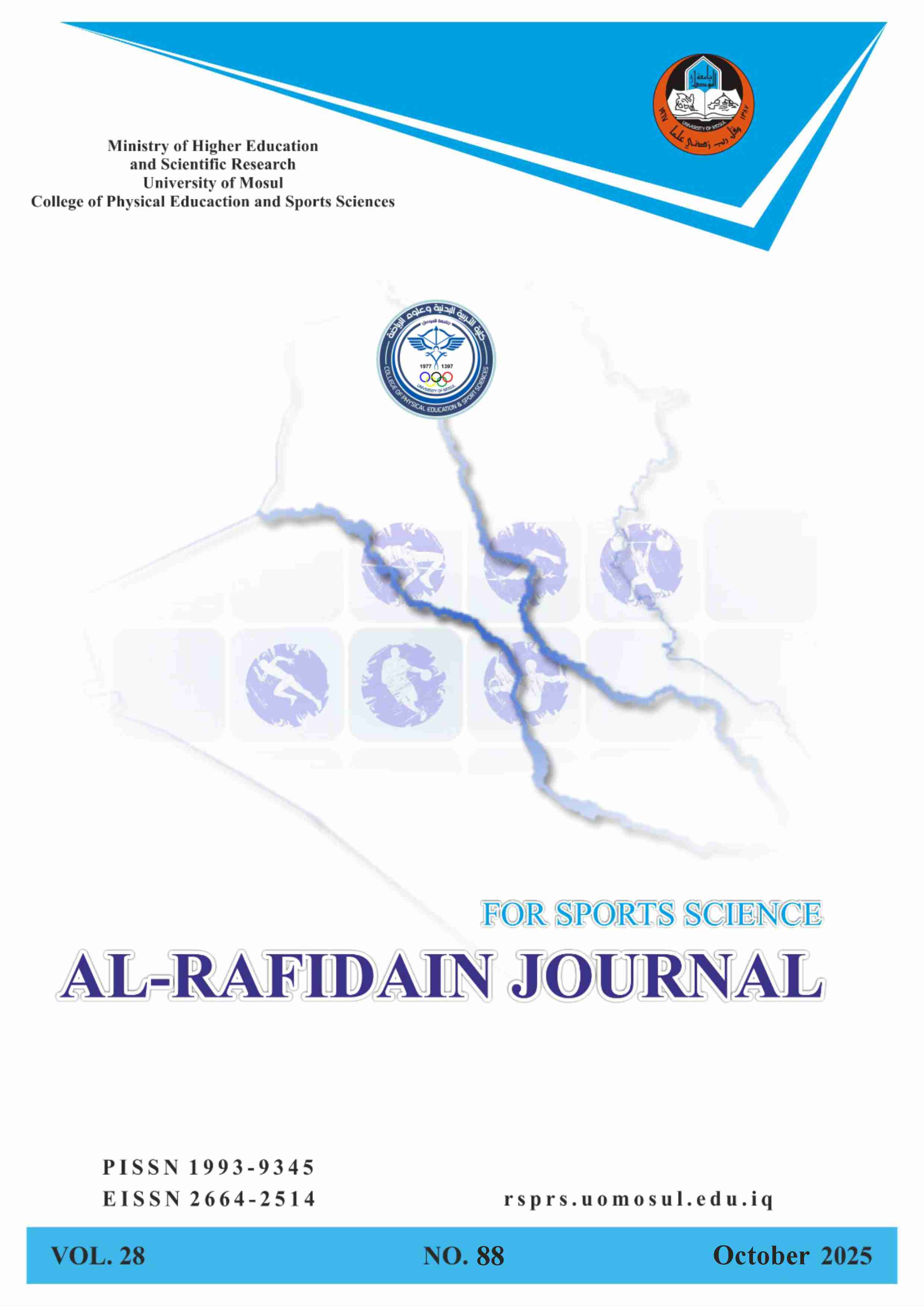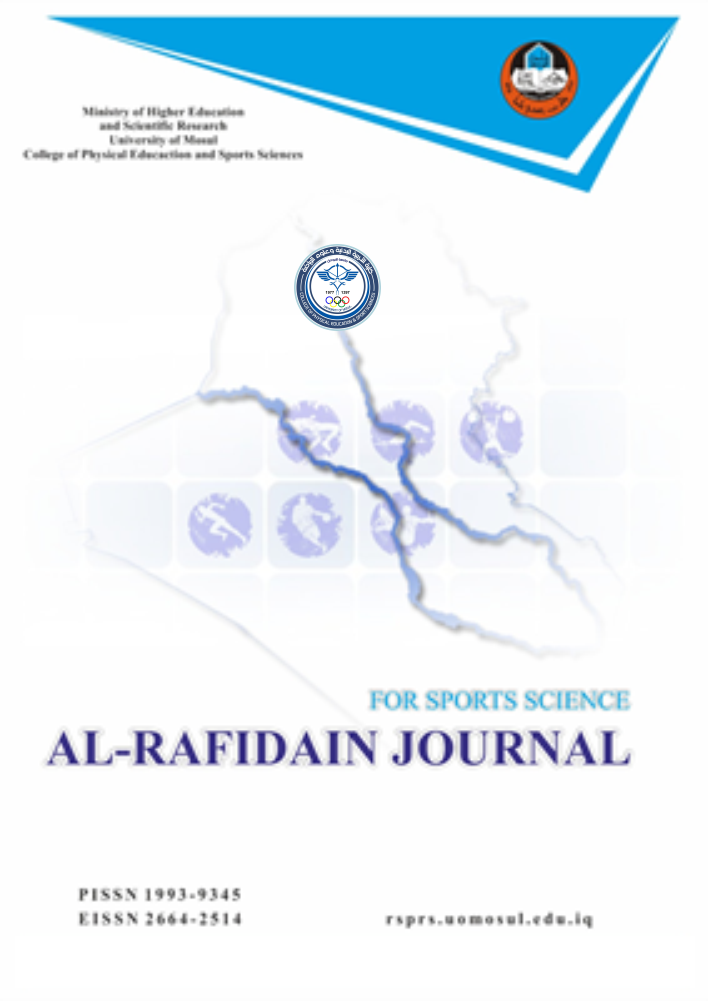Organizational normalization in the youth and sports directorates in Iraq
Published
Oct 24, 2025Pages
404-424Abstract
Organizational normalization stands out as one of the important pillars for effective engagement with the directorate's culture and its goals. It also extends to integrating staff into the organizational fabric, enhancing their sense of belonging and loyalty, and motivating them to perform at their best. And the research aims to:
- Preparing a questionnaire for organizational normalization in the youth and sports directorates in Iraq.
- Identifying the level of organizational normalization in the youth and sports directorates.
he researchers used the descriptive approach in line with the nature of the current research. The research community included all the staff of the Youth and Sports Directorates, numbering (5230) male and female employees, distributed over (17) directorates in (15) governorates. The research sample was selected using the cluster method, and included the staff working in the Youth and Sports Directorates, numbering (755) male and female employees, excluding the directorate directors, their assistants, and the heads of the administrative divisions. The sample was divided into three samples: the first is the exploratory application sample, numbering (38) male and female employees. The second is the preparation and construction sample, numbering (453) male and female employees. The third is the final application sample of the two research tools, numbering (264) male and female employees level.
The researchers concluded the following:
- the Youth and Sports Directorates (Nineveh, Kirkuk, Karbala, and Salah al-Din) adopt Babil, Wasit, Muthanna, Maysan, and Diyala) adopt a low-level organizational normalization.
- The administrations of the Youth and Sports Directorates (Karkh, Rusafa, Sadr City, Diwaniyah, and Anbar) adopt a medium-level organizational normalization.
The administrations of the Youth and Sports Directorates (Basra, Najaf, and Dhi Qar) adopt a high-level organizational normalization.
References
- Ahmed, A. N. M. S. (2024). The impact of work tools and the physical work environment on job satisfaction among a sample of employees in government institutions in Cairo and Giza governorates. Arab Journal of Management, 44(1), 139–156.
- Al-Asimi, W. A. A. D. (2022). The impact of the organizational climate on organizational normalization: A field study on employees of the Board of Grievances in the Makkah Al-Mukarramah region. Arab Journal of Scientific Publishing, (47), 175–202.
- Al-Aqabi, I. M. (2023). The reality of using questionnaires in social research: An analytical study of field studies. Journal of the Faculty of Arts at the University of Benghazi, (56), 177–205.
- Al-Farra, W. A. R. (2009). Analysis of questionnaire data using the SPSS program. World Assembly of Muslim Youth. https://www.reemyiah.com/2021/02/spss_26.html
- Al-Hijazin, L. F. (2024). The impact of organizational normalization on human resources flexibility in Jordanian commercial banks [Unpublished master’s thesis]. College of Graduate Studies, Al-Balqa Applied University, Jordan.
- Al-Khafaji, N. A. (2020). Organizational culture. Al-Yazouri Scientific Publishing and Distribution House.
- Al-Khafaji, R. M. (2018). Social normalization as a mediating variable for the effect of stagnation and work addiction on employee loyalty: A field study at the Iraqi Drilling Company in Basra. Journal of Economic and Administrative Sciences, 24(103), 194–215.
- Al-Labadi, N. A. (2015). Human resources management and development (1st ed.). Dar Dijlah Publishers and Distributors.
- Al-Lami, F. B. M. (2021). Likert scale and Likert items. College of Physical Education and Sports Sciences, University of Maysan. https://www.researchgate.net/publication/353953942
- Al-Maaytah, R. N., & Al-Hamouri, S. S. (2013). Human resources management: A practical guide (1st ed.). Kunuz Al-Ma'rifa House.
- Al-Maghribi, M. A. F. M. (1994). Organizational behavior. Al-Janan House for Publishing and Distribution.
- Al-Shibawy, M. T. J. (2017). The role of organizational normalization in addressing work stress problems [Unpublished master’s thesis]. College of Administration and Economics, Al-Mustansiriya University.
- Alkharusi, H. (2022). A descriptive analysis and interpretation of Likert-scale data in educational and psychological research. Indian Journal of Psychology and Education, 12(2), 13–16.
- Ashforth, E. (2025). Normalization: How organizations socialize newcomers. Human Resource Management. https://onlinelibrary.wiley.com/doi/10.1002/hrm.22291
- Fadhel, B. A., Radi, M. N., Aboud, M. A., & Laibi, S. I. (2025). The effect of speed-blending exercises on short-term anaerobic (phosphagen) power and skill performance of youth football players. Journal of Sports Education Studies and Research, 35(2).
- Hasan, S., Salman, M. F., & Abed, D., & Dalkilic, M. (2023). The role of administrative creativity in the organizational normalization of physical education supervisors in Baghdad. Modern Sport, 22(4), 109.
- Jabr, M. H., & Muhammad, A.-H. J. M. (2023). The impact of organizational values on employee socialization: An applied study of a sample of employees in the Diwan of Maysan Governorate. Iraqi Journal of Administrative Sciences, 19(76), 92–104.
- Muhammad, A. A. (2024). The impact of organizational normalization on organizational learning at Zain Telecommunications Company [Unpublished master’s thesis]. College of Graduate Studies, Al-Balqa Applied University, Jordan.
- Rajab, A. (2023). Personnel and human resources management (1st ed.). Arab Press Agency.
- Rashid, M. F. (2018). Human resources management. Al-Obeikan Publishing House.
- Utrilla, P., & Lorenzo, D. (2015). The effects of coaching on employees and organizational performance: The Spanish case. Intangible Capital, 11(2), 166–189.
- Zawatini, A. (2020). Human resources between efficiency and effectiveness (1st ed.). Academic Book Center.
Identifiers
Download this PDF file
Statistics
How to Cite
Copyright and Licensing

This work is licensed under a Creative Commons Attribution-NonCommercial 4.0 International License.







